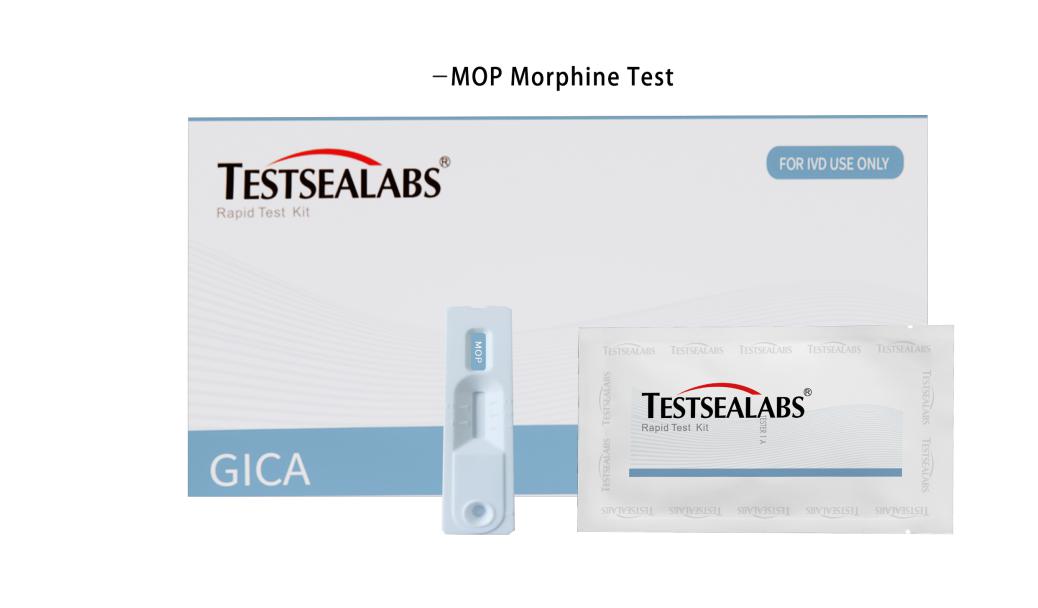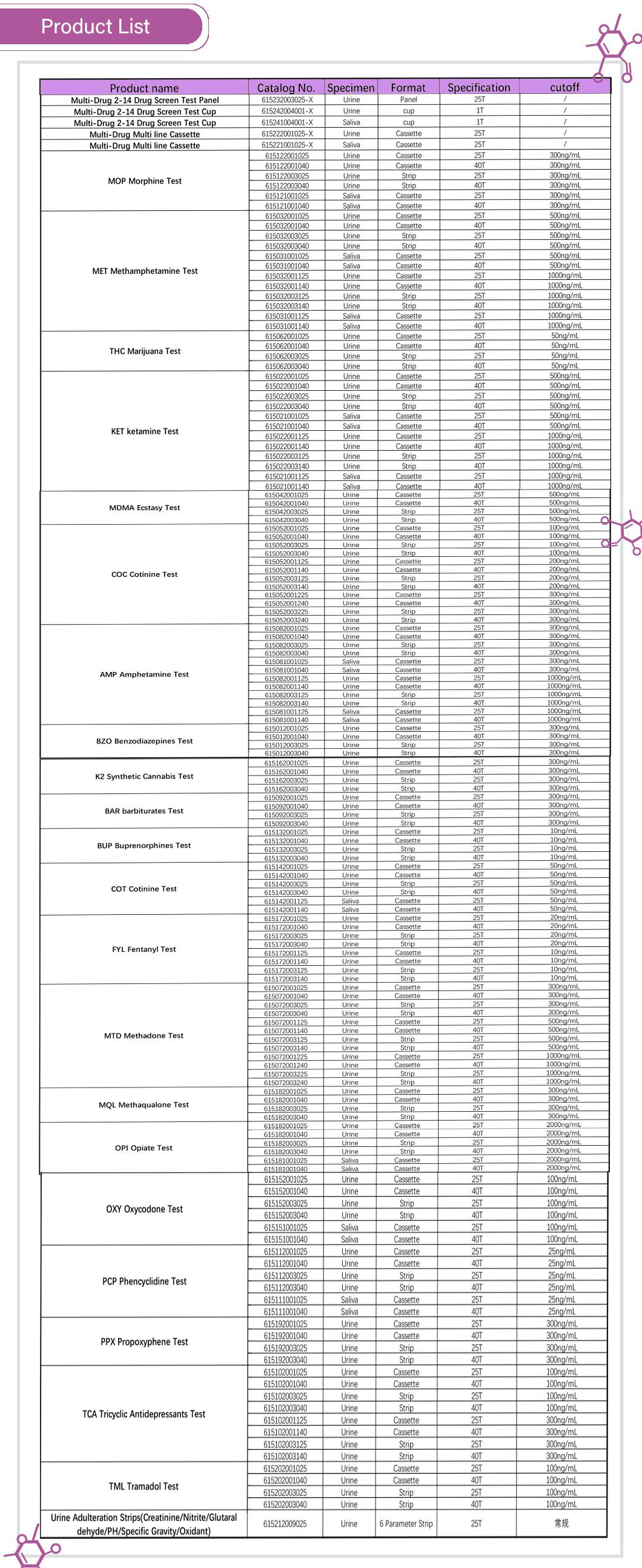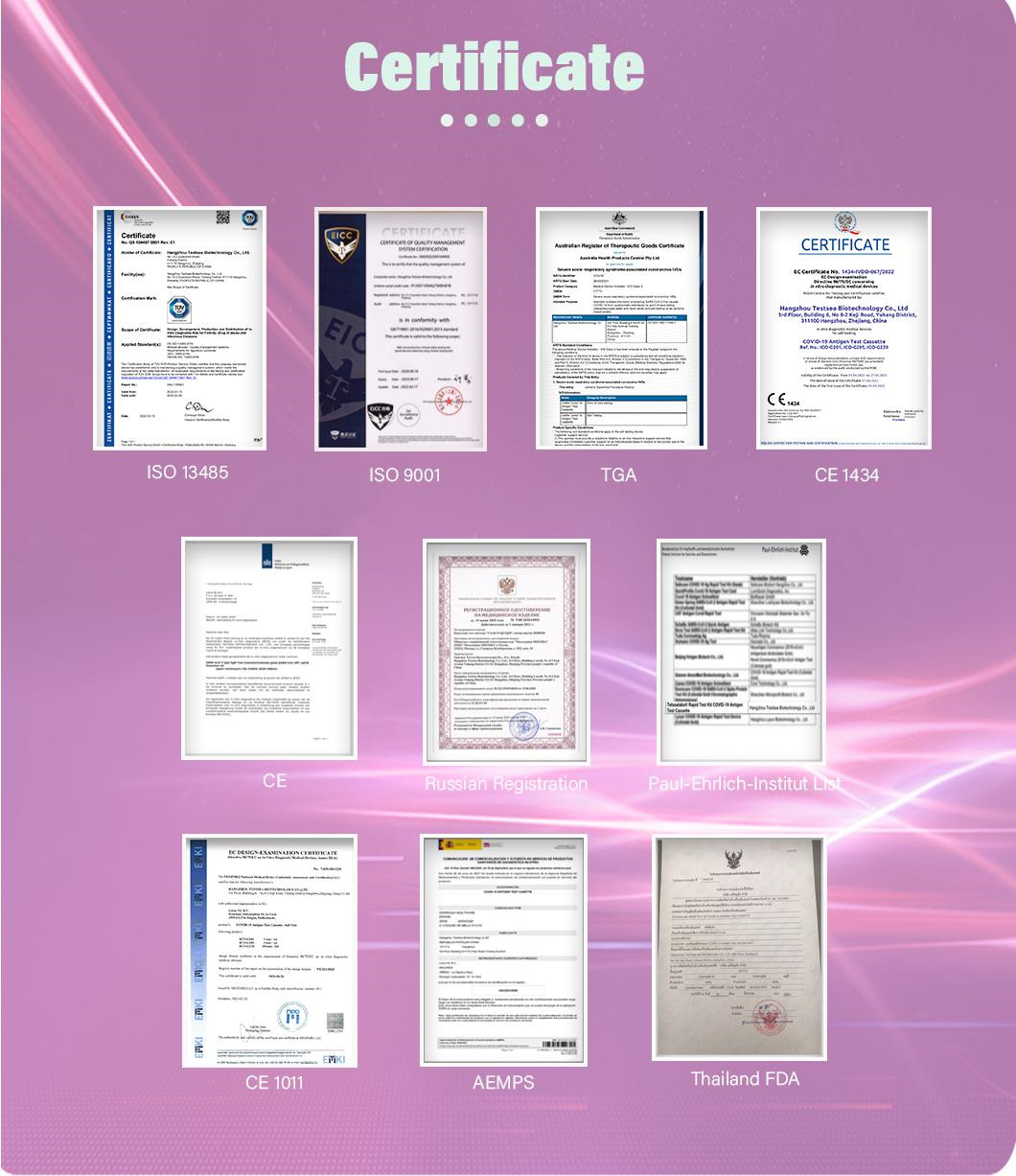Testsealabs MOP Morphine Test Urine Drug Test Kits
[INTRODUCTION]
Morphine is a highly potent opiate analgesic drug. It is the principal active ingredient in opium that is derived from the opium poppy, Papaver somniferum. It is considered to be the prototypical μ-opioid agonist. It acts directly on the μ-opioid receptors to relieve pain. Morphine has a high potential for addiction; tolerance and both physical and psychological dependence develop rapidly.
The MOP Morphine Test (Urine) yields a positive result when the concentration of morphine in urine exceeds 300ng/ml.

[Materials Provided ]
1.FYL Test Device (strip/cassette/dipcard format)
2. Instructions for use
[Materials required, not Provided]
1. Urine collection container
2. Timer or clock
[Storage Conditions And Shelf Life]
1.Store as packaged in the sealed pouch at room temperature (2-30℃ or 36-86℉). The kit is stable within the expiration date printed on the labeling.
2.Once open the pouch, the test should be used within one hour. Prolonged exposure to hot and humid environment will cause product deterioration.
[Testing Method]
Allow the test and urine samples to equilibrate to room temperature (15-30℃or 59-86℉) prior to testing.
1. Remove the test cassette from the sealed pouch.
2. Hold the dropper vertically and transfer 3 full drops (approx. 100ml) of urine to the specimen well of the test cassette, and then begin timing. See the illustration below.
Wait for colored lines to appear. Interpret the test results at 3-5 minutes. Do not read results after 10 minutes.
[Materials Provided ]
1.FYL Test Device (strip/cassette/dipcard format)
2. Instructions for use
[Materials required, not Provided]
1. Urine collection container
2. Timer or clock
[Storage Conditions And Shelf Life]
1.Store as packaged in the sealed pouch at room temperature (2-30℃ or 36-86℉). The kit is stable within the expiration date printed on the labeling.
2.Once open the pouch, the test should be used within one hour. Prolonged exposure to hot and humid environment will cause product deterioration.
[Testing Method]
Allow the test and urine samples to equilibrate to room temperature (15-30℃or 59-86℉) prior to testing.
1. Remove the test cassette from the sealed pouch.
2. Hold the dropper vertically and transfer 3 full drops (approx. 100ml) of urine to the specimen well of the test cassette, and then begin timing. See the illustration below.
3. Wait for colored lines to appear. Interpret the test results at 3-5 minutes. Do not read results after 10 minutes.
[Results interpretation]
Negative: *Two lines appear. One red line should be in the control region (C), and another apparent red or pink line adjacent should be in the test region (T). This negative result indicates that the drug concentration is below the detectable level.
*NOTE: The shade of red in the test line region (T) will vary, but it should be considered negative whenever there is even a faint pink line.
Positive: One red line appears in the control region (C). No line appears in the test region (T). This positive result indicates that the drug concentration is above the detectable level.
Invalid: Control line fails to appear. Insufficient specimen volume or incorrect procedural techniques are the most likely reasons for control line failure. Review the procedure and repeat the test using a new test panel. If the problem persists, discontinue using the lot immediately and contact your local distributor.
[You may be interesting in the products information belows]
TESTSEALABS Rapid Single/Multi-drug Test Dipcard/Cup is a rapid, screening test for the qualitative detection of single/multiple drugs and drug metabolites in human urine at specified cut off levels.
* Specification Types Available
√Complete 15-drug product line
√Cut-off levels meet SAMSHA standards when applicable
√Results in minutes
√Multi options formats--strip,l cassette , panel and cup
√ Multi-drug device format
√6 drug combo( AMP,COC, MET, OPI, PCP, THC)
√ Many Different combinations available
√ Provide immediate evidence of potential adulteration
√6 Testing parameters: creatinine, nitrite, glutaraldehyde, PH, Specific gravity and oxidants/pyridinium chlorochromate















